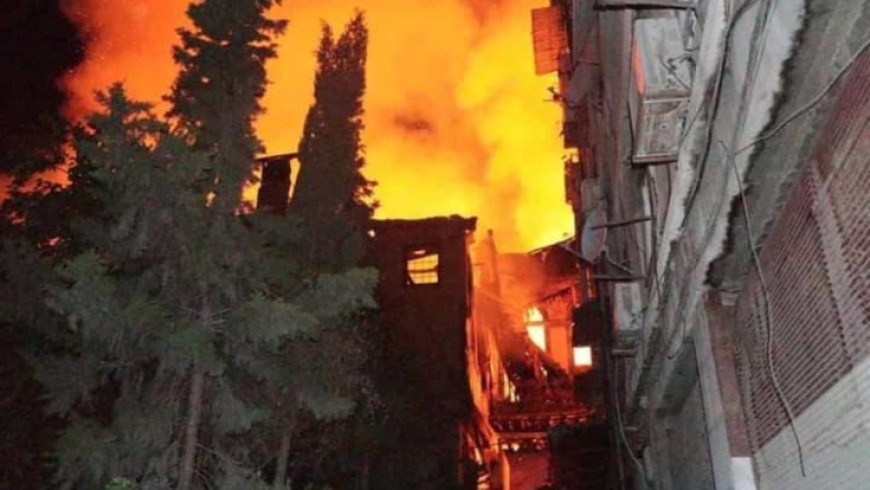Several historical and archaeological buildings and shops in the Sarouja neighbourhood of Old Damascus were extensively damaged by the fire that broke out on the weekend. Among the structures affected were the palace of Emir Mahmal al-Hajj al-Shami, the leader of the Hajj Convoy, Abd al-Rahman Pasha al-Youssef, and the house of Khaled al-Azm, the former Syrian Prime Minister, who was ousted when the Baath Party came to power in 1963.
The fires, which occurred at dawn on Sunday, resulted in the complete destruction of Abd al-Rahman Pasha al-Youssef’s palace. This historic building was the first in Damascus to have electricity, dating back to 1907. The fire also ravaged Khaled al-Azm’s house, which served as the Damascus Historical Museum and Ottoman Documentation Center. Tragically, the fire consumed the valuable “Ottoman Genealogy” manuscripts section of the museum.
Sources in Damascus reported that the Al-Youssef Palace had suffered from neglect and lack of maintenance before being engulfed in flames. According to Syrian historian Sami Moubayed, the palace had deteriorated from the inside and was inhabited by a simple man whose grandfather had worked for Abdul Rahman al-Youssef, the palace’s namesake, who was killed in 1920.
Moubayed further revealed that the palace had been converted into workshops and shops, with the stable now serving as rental spaces for small workshops. Remarkably, the palace had once hosted the German Emperor Wilhelm II during his visit to Damascus in 1898.
One notable story surrounding the palace revolves around the mysterious disappearance of gold belonging to Abdul Rahman al-Youssef. After his death, no trace of the gold was found in Ottoman or international banks. It was speculated that the gold might have been hidden within the palace, leading to numerous attempts over the years to uncover it. The most recent attempt occurred in 2017 when the Syrian regime’s intelligence services discovered the hidden gold.
Although the fires in the Sarouja neighbourhood did not result in any casualties, they caused significant financial losses, with numerous homes and shops being destroyed. The cause of the fires remains unknown, and investigations are ongoing.
Previous incidents
It is worth mentioning that the Sarouja neighbourhood has experienced previous fire incidents. In April 2016, a fire in the Al-Asrounieh market caused extensive damage to over 80 shops. Fires also broke out in the Sarouja market in October 2016, the Al-Hamidiyah market in December 2016, the Bab al-Jabiya area in July 2017, and the entrance to the ancient market in September 2017, resulting in various levels of destruction.
The recent fires have underscored the vulnerability of Old Damascus’ historical buildings and the need for increased preservation efforts to protect the city’s rich heritage.
This article was translated and edited by The Syrian Observer. The Syrian Observer has not verified the content of this story. Responsibility for the information and views set out in this article lies entirely with the author.


